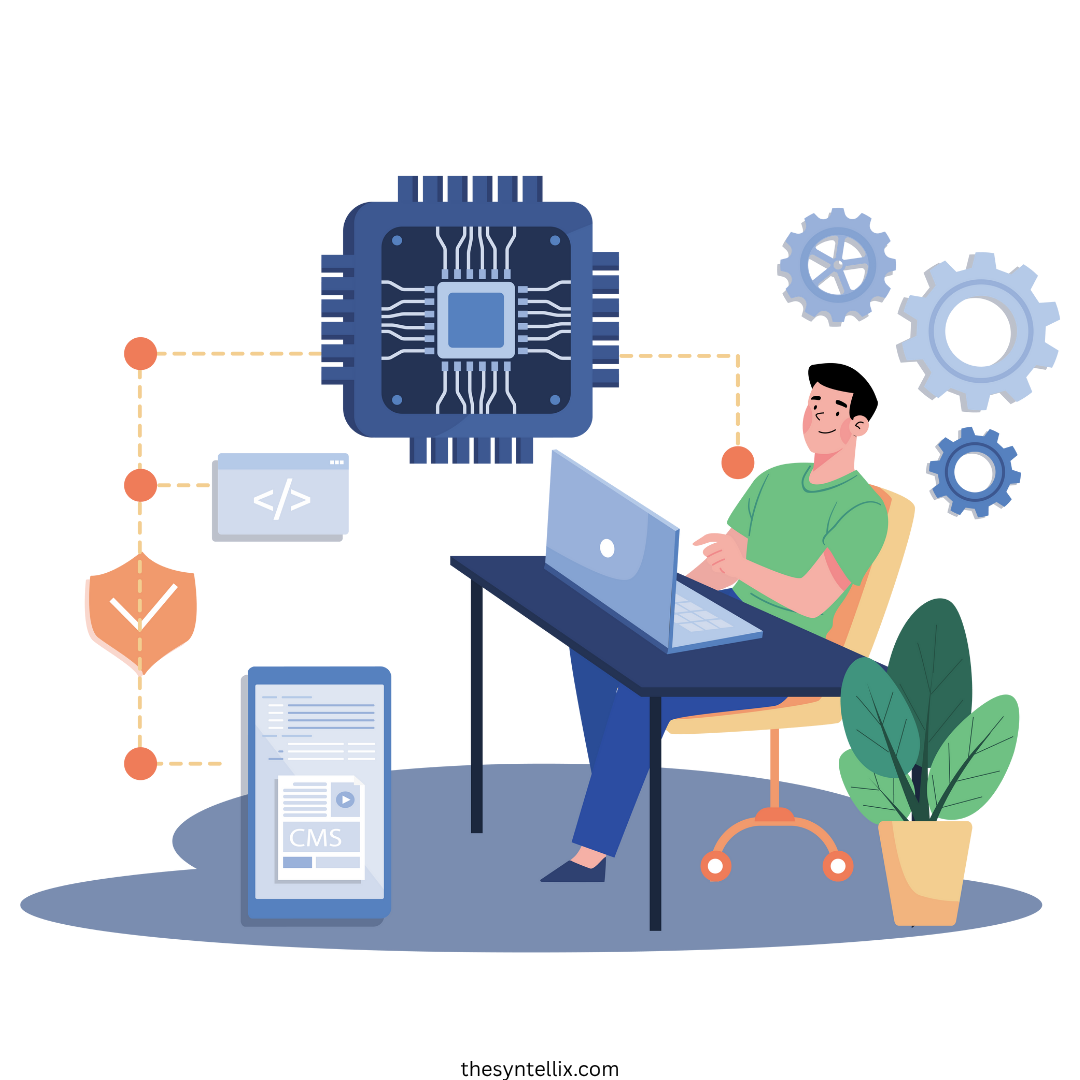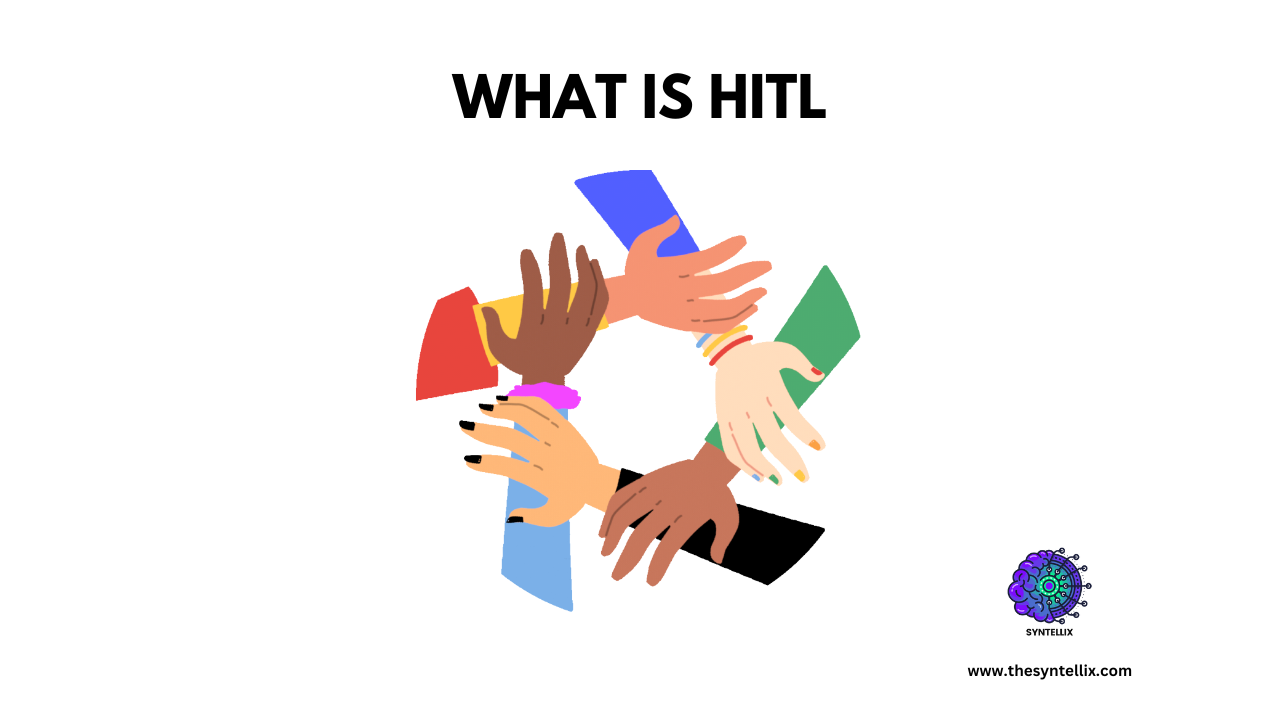Imagine your self-driving car encounters a roadblock it can not navigate. Instead of guessing, it instantly connects to a human operator who guides it safely. This is actually Human-in-the-Loop (HITL) in action. In 2025, HITL systems blend AI speed with human judgment, ensuring reliability in critical decisions. From healthcare to finance, HITL is redefining how we trust and interact with technology. Let’s explore why HITL is indispensable, how it’s applied, and what the future holds.
What Is Human-In-The-loop(HITL)
The collaborative approach where human intelligence and artificial intelligence works together throughout the lifecycle of AI system. The term human in the loop is derived from the concept of loop or feedback cycle, which means that humans are actively involved throughout the AI lifecycle. In HITL, when the machine have to make any decision it calls the humans immediately to take accurate decision. For example, in medical AI system, a doctor might double check a diagnosis suggested by a machine before it is shared with a patient. The human does not just watch in HITL instead they are part of the decision making loop.
The term HITL also remind us that in this fast paced technological world, AI still needs human approval to make fair and safe decisions. For Example, the flying plane can work on its own with autopilot but the trained and experienced pilot is still there to handle critical or emergency situations. In this AI world where machines are increasingly used to make choices about our lives, keeping humans in the loop helps protect values like fairness, accountability, and common sense.
Benefits of Human-In-The-loop
As we have discussed earlier, when we say Human in the Loop, we mean a human helps the machine learn, make better decisions, or correct mistakes. And this teamwork brings some great benefits!
1. Better Accuracy
Sometimes, the machines can make silly errors like they may call a banana a telephone. But with the human involvement they can quickly fix it and can build better accuracy in AI systems.
2. Faster machine learning
The HITL plays the role of trainer or coach throughout the lifecycle of AI system. When human gives continuous feedbacks, the AI learns faster. Just like the student getting help on his homework.
3. Improved user trust
The end users trust the AI system when they know that the human are continuously involved in decision making.
4. Ethical and Fair Decisions
AI can accidentally learn biases. Humans can spot unfairness and make sure the system treats everyone fairly. HITL helps keep AI honest.
5. Enhanced reliability
By continuous human input and feedbacks, the output given by machines is more reliable.
How to Design Effective HITL Systems
Building effective HITL system means that building the technology that works with the people not works instead of people. Human plays an important role in training, testing and correcting the AI systems. To design these AI systems accurately it is important to note that exactly when and how the human involvement is needed. That means that making sure the AI system shows only useful information, asks for help when it’s unsure about the output, and gives humans the power to override wrong results.
Creativity also plays a big role in HITL design. Designers need to understand both how the AI works and what the human needs. For example, if a system detects suspicious bank transactions, the human must be able to review it instead of showing just a warning. This helps AI systems to make better decisions, faster. It is also important to train the AI using real feedback from people so it keeps getting better over time. A well-designed HITL system respects the human insight, learns from mistakes, and makes sure that the technology serves people—not the other way around.
The Future of HITL
1. AI Co-Pilots
Microsoft’s HITL Copilot 2025 helps radiologists by pointing out unusual spots in medical scans, making it twice as fast for them to review the images.
2. Global Ethics Standards
The UN’s HITL Ethics Charter (2025) says that people must clearly understand how humans and AI work together, especially when governments use AI in areas like policing or welfare.
3. Hybrid Workforces
By 2026, 45% of companies will hire people called “AI trainers”—humans who help teach and improve how AI systems work, according to a 2025 report from Gartner.
Conclusion
In 2025, Human-in-the-Loop (HITL) is not just a safety net—it’s the backbone of ethical, efficient AI. By merging machine precision with human wisdom, we are building systems that innovate itself without compromising trust. Whether you’re a developer or a user, embracing HITL means choosing progress with accountability.
Call to Action:
Audit your AI tools: Do they include HITL for critical decisions? Explore Google’s HITL Best Practices to start.
People Also Ask
What is Human-in-the-Loop (HITL)?
HITL integrates human oversight into AI workflows to validate decisions, correct errors, and ensure ethical outcomes.
When should HITL be used?
In high-stakes fields like healthcare, finance, and autonomous systems, where mistakes can have severe consequences.
Does HITL slow down AI?
Not necessarily! Tools like NVIDIA’s Edge Computing enable real-time human-AI collaboration with near-zero latency.

Stay ahead of the curve with the latest insights, tips, and trends in AI, technology, and innovation.

